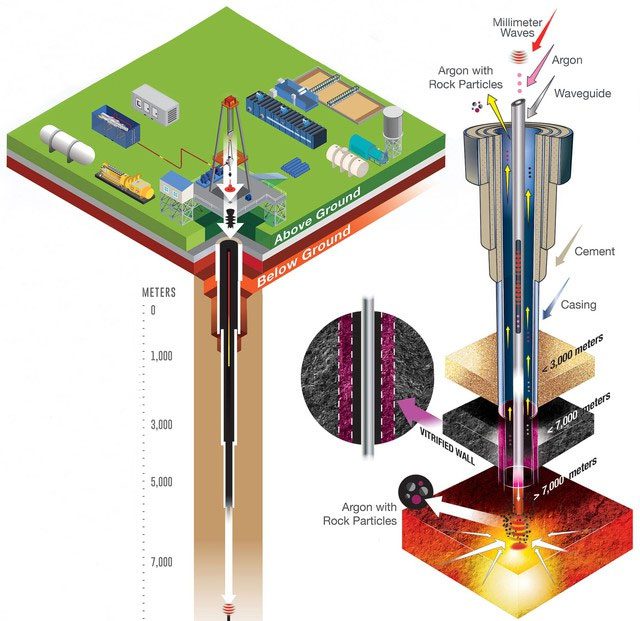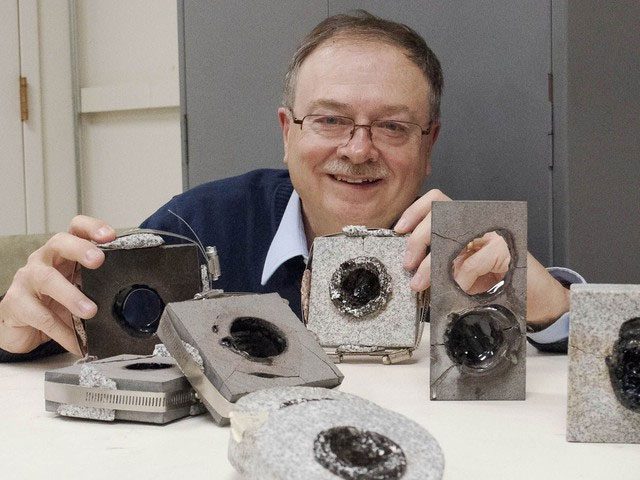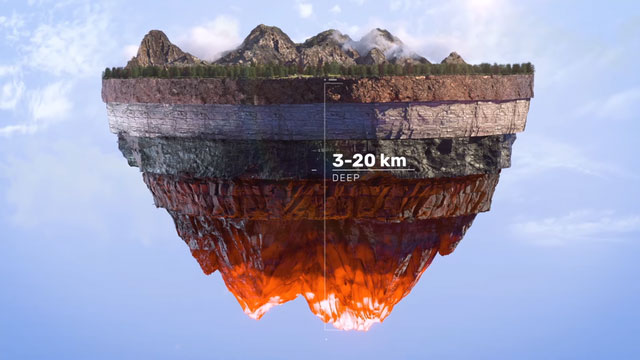Quaise Energy, a company affiliated with the Massachusetts Institute of Technology (MIT) in the United States, plans to utilize technology that vaporizes rock at the Earth’s core to harness deep geothermal energy (heat from the Earth).
The depth that Quaise Energy aims for is 20,000 meters, where the rock can reach temperatures up to 500 degrees Celsius. This depth is 2.26 times greater than the height of Mount Everest, the tallest mountain in the world, and 1.63 times deeper than the man-made well that currently holds the record for the deepest point on Earth, drilled by the Soviet Union in 1989 (known as the Kola Superdeep Borehole).
Scientists indicate that drilling deep into the Earth’s core is extremely challenging and presents technical difficulties. As depth increases, both temperature and the complexity of rock layers also rise. Conversely, the deeper the drill goes, the higher the temperature that can be harnessed for electricity production.
So, what technology will Quaise Energy use to ensure their drill bit does not soften like a noodle in the Earth’s core?
Exclusive “Made in USA” Technology
Thinkgeoenergy reported on March 12 that Quaise Energy is developing a new technique that uses high-power millimeter waves to vaporize rock (referred to as Millimeter Wave Drilling). This technology is based on over a decade of research at MIT and recent testing at the Oak Ridge National Laboratory in the United States.

Quaise Energy’s millimeter wave drilling system. (Source: Quaise Energy)
Millimeter wave drilling uses a continuous energy wave beam in the range of 30-300 gigahertz (millimeter waves) to melt, vaporize, and drill through extremely hard and hot rock layers deep within the Earth’s crust.
Further explaining the exclusive American millimeter wave drilling technology, Geoengineering noted that millimeter wave drilling is a type of direct energy drilling invented by Dr. Paul Woskov, a senior research engineer at the Plasma Science and Fusion Center at MIT.

Gyroscope at the Wendelstein 7-X nuclear fusion research facility of the Max Planck Institute in Greifswald, Germany. (Source: Geoengineering)
Millimeter wave drilling is an advanced drilling technology and a byproduct of nuclear fusion research, using energy to penetrate the Earth’s crust instead of conventional mechanical drill bits with metal tips.
These millimeter waves are generated using a gyroscope. A gyroscope is a type of vacuum tube that emits electron beams, creating electromagnetic waves in the millimeter wave range of the electromagnetic spectrum.
How Does Millimeter Wave Drilling Change the Game?
“Beneath our feet, there is an immense amount of heat, 20 billion times the energy that the world uses in a year,” Dr. Paul Woskov stated.
“Deep geothermal energy is a massive energy reservoir, second only to nuclear fusion, available 24/7,” Dr. Woskov, the “father” of millimeter wave drilling technology, commented when asked by MIT News about the geothermal energy source that has yet to be widely utilized.
Quaise Energy plans to use their millimeter wave drilling technology to drill deeper and faster than any country has ever done before, aiming to reach extremely hot geothermal reservoirs (rock layers) at 500 degrees Celsius.
Quaise Energy estimates that they will be able to drill boreholes between 12 to 20 kilometers deep in just a few months (compared to the Soviet Union’s Kola Superdeep Borehole project, which reached depths of over 12 kilometers in about 22 years).

Dr. Paul Woskov – the inventor of millimeter wave drilling technology. (Photo: MIT News)
Quaise Energy also plans to drill these super-deep boreholes at existing fossil fuel power plants (such as coal and natural gas) to effectively and cost-efficiently utilize existing infrastructure like power plant generators, cooling towers, buildings, and transmission lines.
Scientists estimate that these super-deep geothermal power plants could produce terawatts of clean energy within 100 years.
Above all, if this technology is widely applied, millimeter wave drilling has tremendous potential to mitigate and reverse climate change and global warming.
Quaise Energy’s goal is to replace fossil fuel power plants with super-deep geothermal power plants, creating a large amount of energy with very low carbon content and significantly reducing the amount of carbon dioxide entering the atmosphere.
The company further stated that once this new technology is implemented, they could generate electricity at a terawatt scale (1 terawatt equals 1 trillion watts). Notably, this carbon-free energy source only occupies an area of 1% compared to other renewable energy technologies.
These advancements indicate that leading the exclusive technology in deep drilling provides the United States with energy privileges and a pathway to carbon-free development – two major challenges faced by many countries amid the ongoing global warming crisis.
The Journey “Into the Earth” Worldwide
For decades, many countries have attempted to drill into the Earth’s crust to reach the mantle but have been unsuccessful due to the extreme heat at deep drilling sites and the extremely hard rock formations under high pressure deep underground.

The deeper the drill, the greater the technical challenges. (Photo: Quaise Energy)
From 1961 to 1966, the U.S. Mohole Project attempted to drill through the crust in the Pacific Ocean off the coast of Mexico, but they only managed to reach a depth of 183 meters.
From 1970 to 1992, the Soviet Union’s Kola Superdeep Borehole project achieved a record depth of 12.2 kilometers but could only drill about one-third of the way through the Earth’s crust. In 1990, Germany initiated the German Continental Deep Drilling Program in Bavaria in an attempt to break the Soviet record but could only reach a depth of 9 kilometers.
Recently, China also drilled 10,000 meters at their Shendi Ta’Ke-1 superdeep borehole (designed depth of 11,100 meters) in the Taklimakan Desert’s Tarim Basin (located in the Xinjiang Uygur Autonomous Region, northwest China). At this depth, Shendi Ta’Ke-1 is the deepest borehole in Asia.




















































